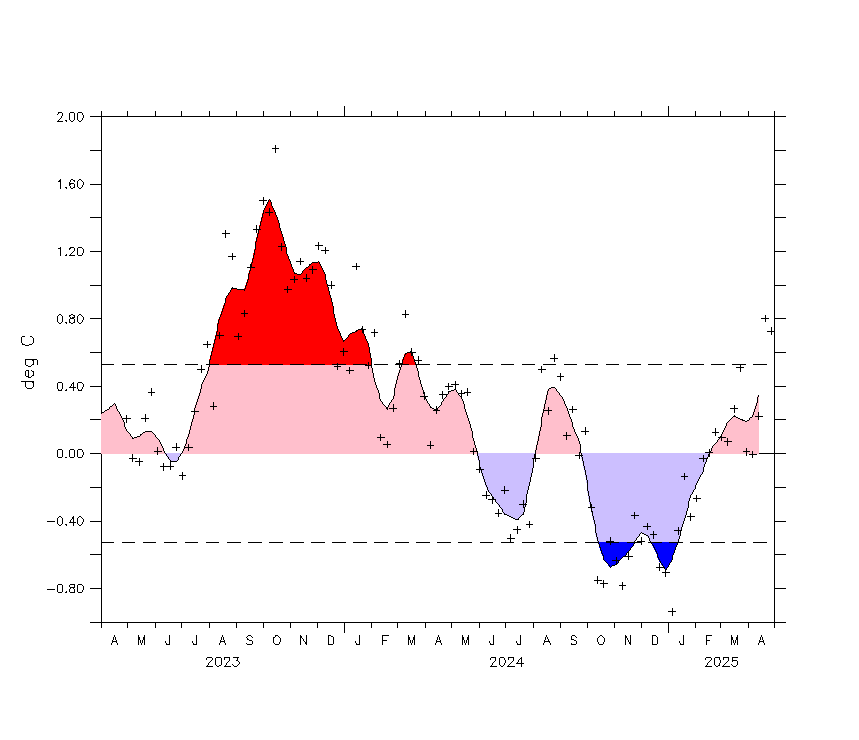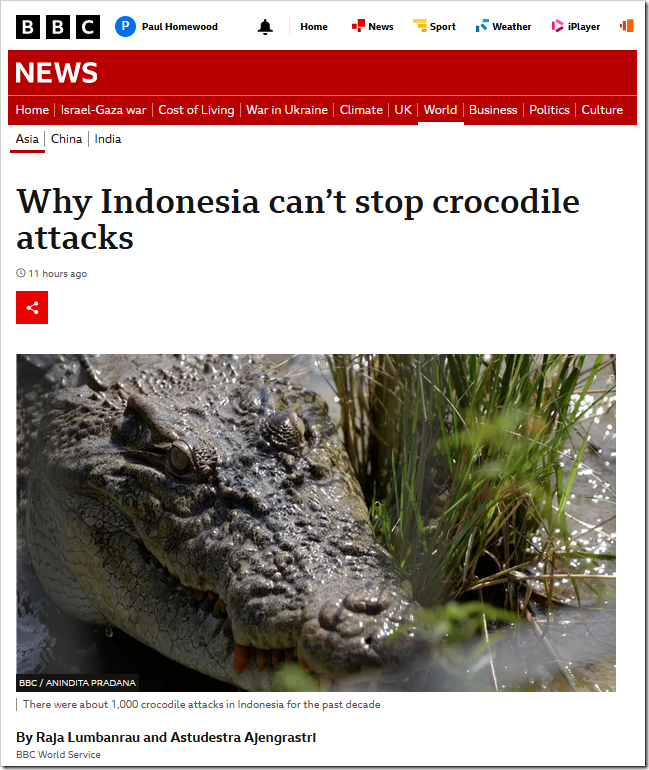By Paul Homewood
They still can’t resist mentioning climate change!
When Sariah went to fetch water in a pit near her home in Bangka Island, Indonesia, last September, she was unaware that a 3m-long saltwater crocodile had been resting in the crater, watching as she filled one of her buckets.
“The water was calm and there was no sign of a crocodile, so I decided to take a bath. Suddenly, it appeared out of nowhere and bit me, dragging me by my left arm into the water,” the 54-year-old says.
Indonesia sees the most saltwater crocodile attacks in the world. In the past decade, there have been about 1,000 attacks, killing more than 450 people. Nearly 90 of these attacks took place in Bangka and its neighbouring Belitung island, according to the International Union for Conservation of Nature (IUCN).
Bangka island is one of the richest tin-mining regions in the world.
The island – almost the size of Hawaii – has a population of one million, and about 80% of them are miners. More than 60% of the island’s land has already been converted into tin mines, says wildlife conservation group Walhi. Many of these mines are illegal.
Decades of tin exploitation have stripped the island of its forest, leaving behind thousands of vast craters and pits that resemble a lunar landscape. And as land deposits diminish, miners are turning to the sea.
That means saltwater crocodiles, which can also live in freshwater, are squeezed out of their natural habitats. Now they are living in abandoned and active mining pits close to people’s homes, contributing to the rise in attacks.
Last year’s prolonged dry season, driven by climate change, dried up the well in front of Sariah’s house. Her water supply was cut after she fell behind on payments for three months. So, the abandoned pits were the only source of water for her family and many others.
Five days after the attack on Sariah, a miner in the island was almost killed by a crocodile when he was washing tin ore in another pit. He suffered injuries in his head, shoulder and an arm.
https://www.bbc.co.uk/news/world-asia-67004770
There is no evidence that “last year’s prolonged dry season was driven by climate change”.
#
Paul Homewood comments: On the contrary, drought in Indonesia is driven by El Nino cycles, along with a positive Indian Ocean Dipole. El Nino = dry in Australia and Indonesia; La Nina means wet:
This year has seen a return to El Nino conditions. The Indonesian drought has also been exacerbated by the positive Indian Ocean Dipole this year:

Dipole Mode Index (DMI)
The DMI index is an indicator of the east-west temperature gradient across the tropical Indian Ocean, linked to the Indian Ocean Dipole or Zonal Mode. It is calculated as the difference of the WTIO and SETIO indices. Extreme September-October-November rainfall in tropical East Africa has associated with periods of persistently high DMI (Black et al.,Mon. Wea. Rev., 2003; this paper can be accessed via the AMS Web site here).
In the full series case, monthly averages are shown by the plus signs, three month running mean filtered index values are shown by the shaded regions. In the “last two years” case, weekly averages are shown by the plus signs and the monthly average values are shown by the shaded regions.The weekly standard deviation of the index over the period 1982-2005 is indicated on the plot.
This index was defined by Saji et al. (Nature, 1999).
http://www.bom.gov.au/climate/enso/
El Ninos, Dipoles and droughts have always happened, and always will.
Just as crocodiles still eat women!







